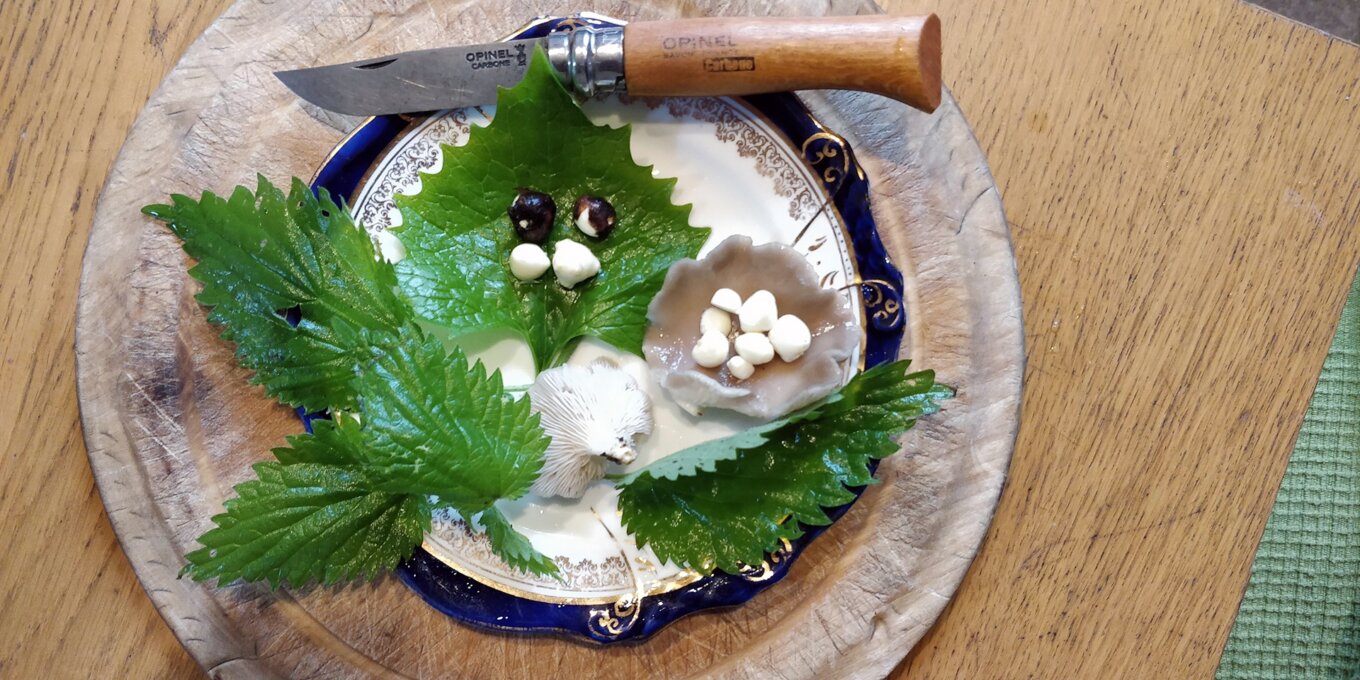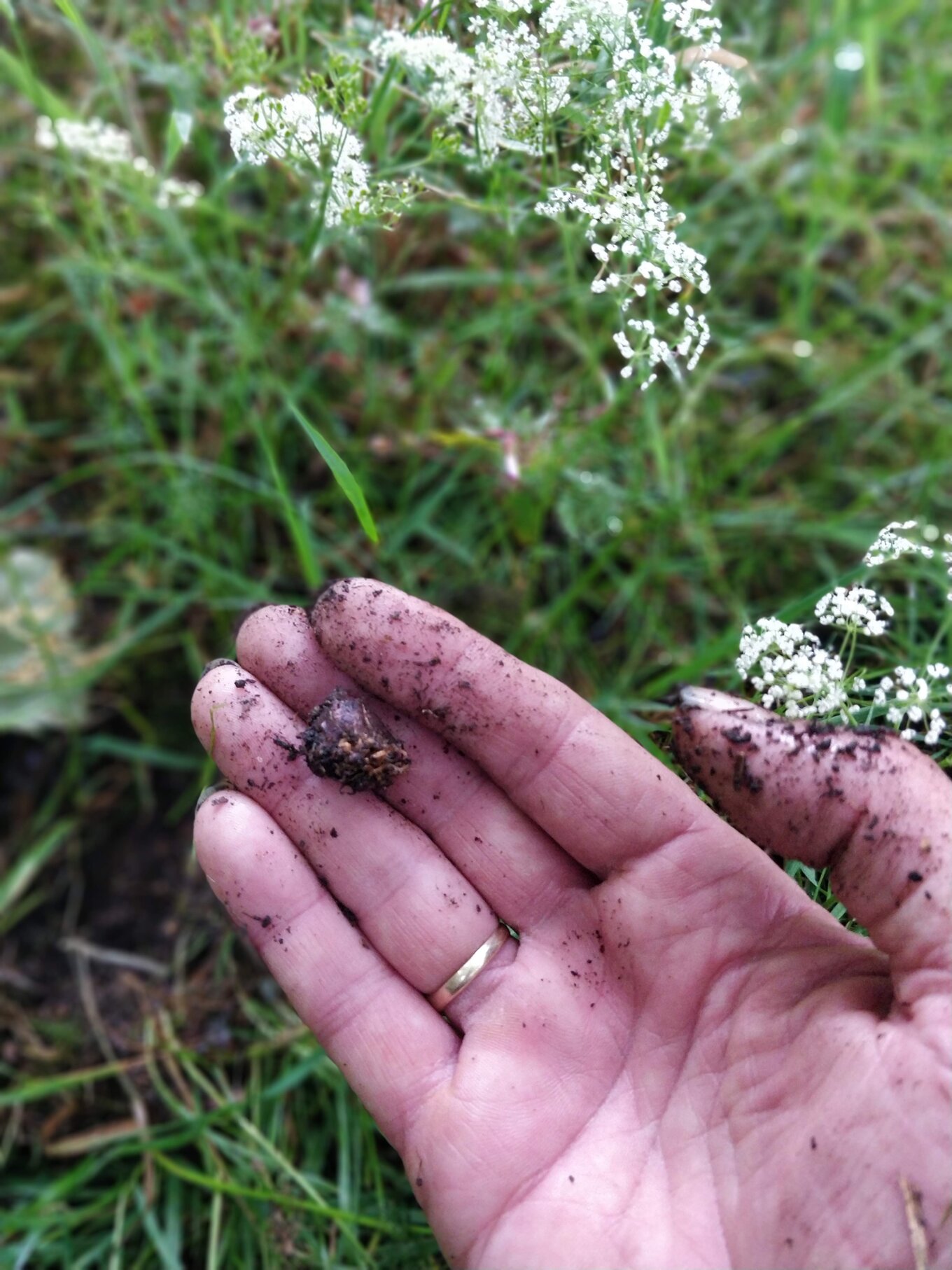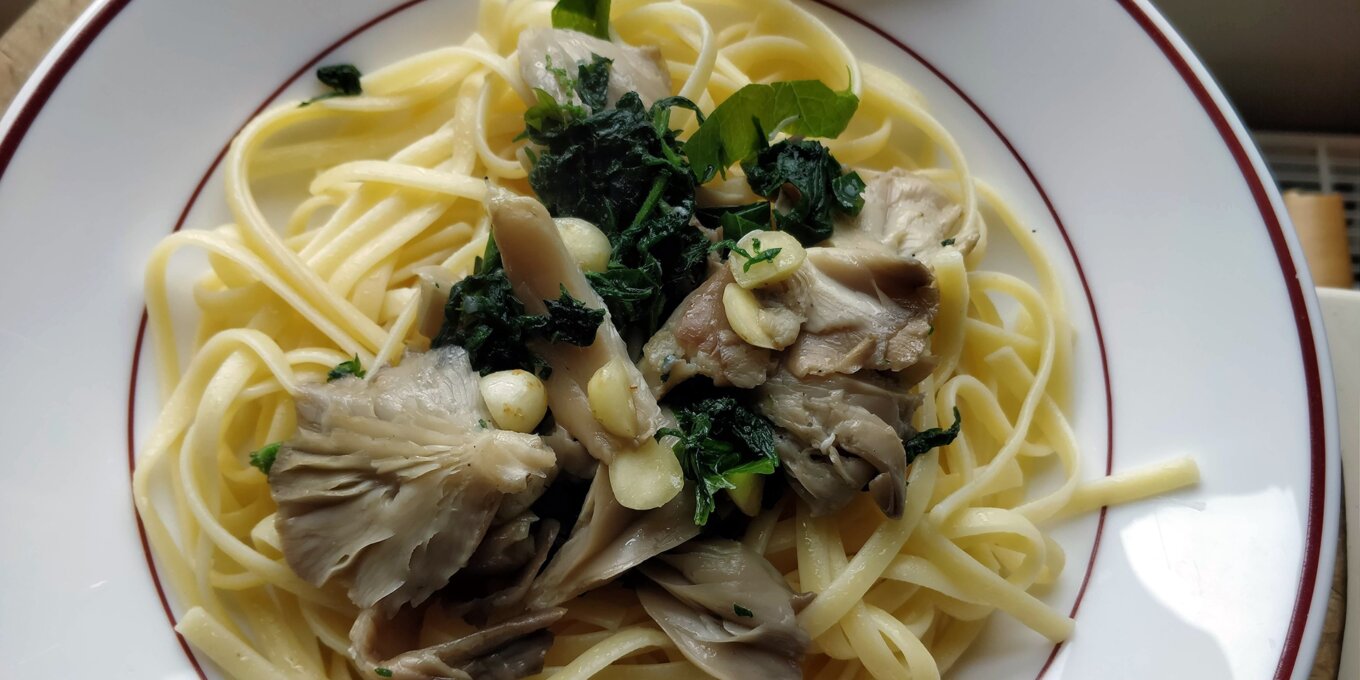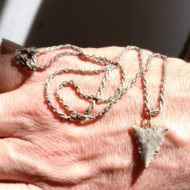Seeking a small, chickpea-sized tuber above Bradfield.

As I walk through fields and woods in the valleys above Bradfield with a group of friends, I stop various people innocently walking and ask them what sort of wild foods they collect, if any. The responses are what I might expect: blackberries, wild garlic in the spring, and one man’s bitter parting remark that his days of mushrooming are far behind him.
I’m looking for something quite specific on this walk, a plant called the pignut. I don’t know if it’s there because I’ve not looked, but I tell my friends to look out for a wispy and insignificant little plant, like a small cow parsley.
On the way through the forest edge I see some hedge garlic, which I pick alongside some of the fresher stinging nettle leaves. I also collect some oyster mushrooms growing on fallen birch boughs.
As we leave the woodland and move into the open grassland I meet Bob, who is walking with his dog. It reminds me of the cross-breed terrier that I saw working with wild boar hunters in the South of France some years ago. I’ll never forget my only trip out with the hunters in a rural community not far from Carcassonne around 2007. I got a call from the Mayor of the village, finally inviting me to accompany him.

I made a mistake. I had the permission of the Mayor but not the permission of the Boar, the sanglier itself, and I paid for it with a badly sprained ankle which took nearly a year to heal properly. I even took myself to the local ‘fire blower’, or folk healer, in the neighbouring village. The souffleuse de feu graciously allowed me into her kitchen and, after running her hands over my ankle, told me I’d left it too late.
I knew that. Too late to ask permission of the wild boar, too late to change my shoes for something more appropriate, too late to talk to the trees through which we walked whilst the small, thick-skinned terrier dug deep in undergrowth to drive the great boar into the open. Too late to look at the moon and see in its crescent form the tusks of the boar, to warn it, apologise beforehand, find out if a tree rustled nearby, if permission was granted.
Bob told me of a variety of foods he collected. He’d been brought up on his grandfather’s farm and had learned there. I doubt he’d ever asked permission and I doubt he’d ever been refused agreement. We spoke about empty spaces. He talked about where he’d seen ceps growing and spoke about an open beechwood, the location of which I will hold as a secret, rich (perhaps) in mushrooms.
So many sites of wild food are invisible and it’s in the viewing of their absence that true knowledge is gathered.
I heard a call from my friends ahead of us. “Look here,” my wife shouted, “Lucy’s spotted a potential pignut.”
I continued my conversation with Bob. As we approached a small stream, in the grass on the banks emerged a rather indistinct foliage and flower. Yes! It looked like a pignut. My hands were shaking as I pushed my fingers into the earth underneath and around the base of the stem. Nothing. I pressed deeper into the moss, still slightly dry from the remarkable spring drought, and there emerged the small, chickpea-sized tuber of the pignut.
I jumped with joy and showed it to Bob. I told him to rub off the brown skin to find a clear cream nut underneath. Taste it. He took it down to the stream, washed off the skin in the running water and ate.
I chased after my friends and called them back, shouting out with such joyous amazement that here was a pignut. I looked into the open fields to the right and there, stretched across the lower part of the field, were dozens of flowering pignuts. I dug my fingers down into them to look for the tubers. The earth was still hard and dry so I took out my Opinel knife and cut beneath to retrieve the nuts. I peeled some and handed them out to taste.

There was no need for apology here. No need for permission from the plant. Perhaps just the excitement, the blood running fast in admiration of one of the most enjoyable wild food snacks to be had. In Food For Free, Richard Maybe describes how pignuts were the favourite of country children, and we find that they really are child-like little mouthfuls. They are crisp with a light and nutty flavour, one of the few real sources of starch that can be found in June.
I collected a decent handful of the nuts and brought them home, along with the oyster mushrooms, nettles and hedge garlic. I cooked some linguine and using rapeseed oil I lightly fried the mushrooms, followed by the nettles and hedge garlic, and finally the pignuts. I served them within the hour with such a happy feeling of having been given them as a gift.
I’ve been receiving a lot of gifts recently. My sister died a few weeks ago and her funeral was the very opposite of the boar hunt and my badly swollen ankle, an ongoing agreement from beyond the grave and within the rhythms of the lives of the mourners that things were being done in the right order.
Accepting gifts and recognising permission are the lover’s clues to getting it right. By the edge of the dam above which we were walking, with the water levels low you could see the old cobbled paths that ran alongside, the remains of the field boundaries still marked by stone disappearing into the water. The wild foods we collect, the wild foods we imagine growing or to which we hope to return, mark our gastronomic paths and boundaries. Eating of these harvests is an extraordinary reconstitution of something that must never be done other than with love.
